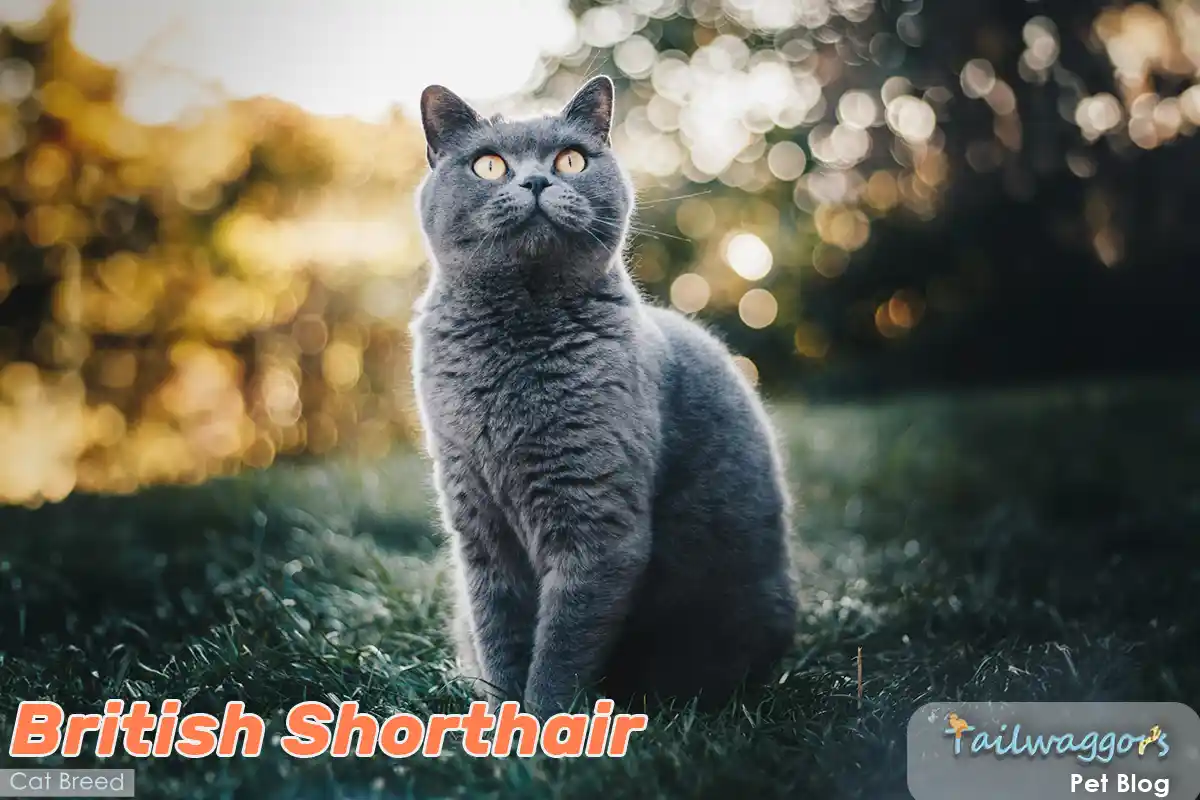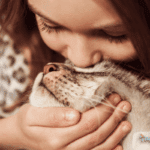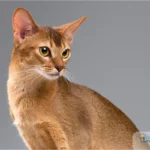The British Shorthair Cat Breed
British Shorthair cats are celebrated for their plush, dense coats, round faces, and captivating amber or blue eyes. Often called the “teddy bears” of the cat world, these iconic felines combine charm and elegance with a calm, easygoing personality that has made them one of the most beloved cat breeds worldwide.
Known for their independent yet affectionate nature, British Shorthairs thrive in diverse living environments, from bustling family homes to cozy apartments. Their quiet demeanor and low-maintenance care needs make them an ideal companion for both experienced pet parents and first-time cat owners.
If you’re looking for a regal yet approachable feline friend that adapts to various lifestyles, the British Shorthair could be the perfect choice. This guide dives into their unique traits, care essentials, and what makes them such a cherished breed.
Quick Facts: Meet the British Shorthair Cat
Here’s a quick snapshot of British Shorthair traits to help you understand their unique qualities:
| Characteristic | Description | Rating |
|---|---|---|
| Size | Males: 12–18 lbs (5.4–8.2 kg), Females: 8–14 lbs (3.6–6.4 kg) | ⭐⭐⭐⭐ |
| Average Lifespan | 12–20 years | ⭐⭐⭐⭐⭐ |
| Intelligence Ranking | Highly intelligent | ⭐⭐⭐⭐⭐ |
| Exercise Requirements | Moderate; enjoy short play sessions | ⭐⭐⭐ |
| Grooming Needs | Low; weekly brushing required | ⭐⭐ |
| Training Adaptability | Respond well to positive reinforcement | ⭐⭐⭐⭐ |
| Compatibility with Children | Excellent; patient and tolerant | ⭐⭐⭐⭐⭐ |
| Energy Level | Moderate; playful as kittens, calmer as adults | ⭐⭐⭐ |
| Shedding Level | Low to moderate | ⭐⭐⭐ |
| Apartment Living | Highly suitable; adapt well to small spaces | ⭐⭐⭐⭐⭐ |
| Health Issues | Prone to obesity and HCM; routine checkups recommended | ⭐⭐⭐ |
| Cost of Ownership | Moderate; includes food, grooming, and vet care | ⭐⭐⭐ |
| Vocal Tendency | Quiet; soft chirps and purrs | ⭐⭐ |
| Social Needs | Moderate; affectionate but independent | ⭐⭐⭐⭐ |
- • One of the world’s oldest cat breeds, renowned for their calm demeanor and quiet intelligence.
- • Independent yet affectionate, forming deep bonds with their families while respecting alone time.
- • Ideal for families, singles, and first-time cat owners, thanks to their adaptable and low-maintenance nature.
- • Perfect for apartments or larger homes, thriving with moderate exercise and enrichment activities.
Key Traits of British Shorthair Cats
- Plush and Iconic Appearance: Renowned for their velvety coats, round faces, and striking eyes, British Shorthairs are a visual delight.
- Calm and Easygoing: With their relaxed demeanor, British Shorthairs excel in maintaining harmony in both quiet and busy households.
- Independent Yet Affectionate: They form strong bonds with their families while respecting your need for personal space, offering the perfect balance of companionship.
- Adaptable and Low-Maintenance: These cats thrive in various living spaces, requiring minimal grooming and only moderate enrichment.
- Quiet Intelligence: Observant and clever, British Shorthairs enjoy thoughtful interactions and low-energy play.
As Dr. Esther Knoetze explains, British Shorthairs are prone to weight gain due to their calm nature. Balanced diets and regular interactive play are key to maintaining their health.”
If you’re considering adding a British Short Hair Cat to your home, make sure you’re prepared. Check out our Complete Guide to Cat Proofing Your Home for essential tips on how to make your living space safe for your new feline friend.
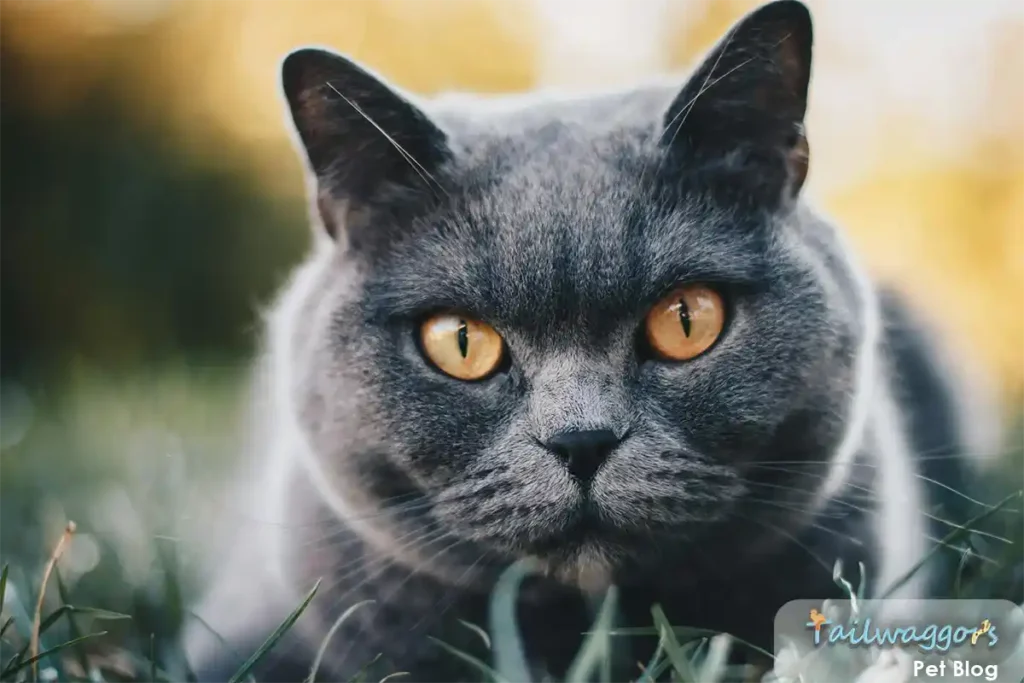
History and Origins of the British Shorthair Cats
Quick Facts About British Shorthair Origins
| Aspect | Detail |
|---|---|
| Genetic Heritage | Descended from Roman domestic cats and local wildcats |
| Size Profile | Males: 12–18 lbs (5.4–8.2 kg), Females: 8–14 lbs (3.6–6.4 kg) |
| First Documentation | 19th century, recognized at the 1871 Crystal Palace Cat Show |
| Geographic Connection | Originates from Britain; adapted to cold climates |
Understanding the history of British Shorthair is fascinating. If you’re interested in exploring more about the diverse cat breeds and their origins, our Complete Guide to Choosing the Perfect Cat Breed might provide additional insights.
The Storied Origins of the British Shorthair
The British Shorthair is one of the world’s oldest and most distinguished cat breeds, steeped in history and a touch of folklore. From their humble beginnings as working cats to their rise as one of Britain’s most beloved companions, this breed’s journey is as captivating as its iconic appearance.
The Mythical Origins: Legends and Lore
British Shorthairs are often tied to Roman history, with stories suggesting their ancestors arrived in Britain during the Roman conquest around AD 43. Roman soldiers brought these cats to protect their grain supplies from rodents during military campaigns. Believed to be descendants of Egyptian domesticated cats, these felines quickly adapted to the British climate and interbred with local wildcats, creating a robust, short-coated cat known for its exceptional hunting abilities.
Medieval Companions
In medieval Britain, British Shorthairs were revered as symbols of luck and protection. Found in castles and monasteries, they were prized for their pest control skills, safeguarding food supplies and sacred artifacts.
The Cheshire Cat Connection
A charming theory ties the British Shorthair to the Cheshire Cat in Lewis Carroll’s Alice in Wonderland. While no direct evidence exists, their distinctive smile-like expression and round faces make them a plausible inspiration for this whimsical character.
The Real Origins: From Farm Cats to Aristocratic Companions
Farm Cats of Roman Britain
For centuries, British Shorthairs were hard-working farm cats, valued for their ability to keep barns and homes pest-free. Their resilience and adaptability helped them thrive in rural and urban settings alike.
Breed Formalization and Recognition
By the 19th century, breeders began to admire the British Shorthair for more than just its practicality. The breed’s plush coat and round features, especially in the iconic British Blue variety, drew the attention of Harrison Weir, known as the “Father of the Cat Fancy.” In 1871, the breed debuted at the Crystal Palace Cat Show, cementing its place as a beloved companion.
Challenges During the World Wars
The World Wars brought significant challenges to the British Shorthair population. Food shortages and economic struggles caused their numbers to plummet. To preserve the breed, breeders introduced Persian cats into the bloodline, enhancing the coat’s density and texture while maintaining the Shorthair’s characteristic stocky build and round face.
Modern-Day British Shorthairs: A Resurgence
Dedicated post-war breeding efforts restored the British Shorthair to its former glory. By the 1970s, major cat registries like the Cat Fanciers’ Association (CFA) and The International Cat Association (TICA) recognized the breed. Today, British Shorthairs are celebrated for their adaptability, gentle demeanor, and low-maintenance care, making them a top choice for families and singles alike.
🐱 Fun Fact
British Shorthairs’ “teddy bear” appearance has made them stars in films, advertisements, and even pop culture. They consistently rank among the most popular cat breeds in the United Kingdom, cementing their status as feline royalty.
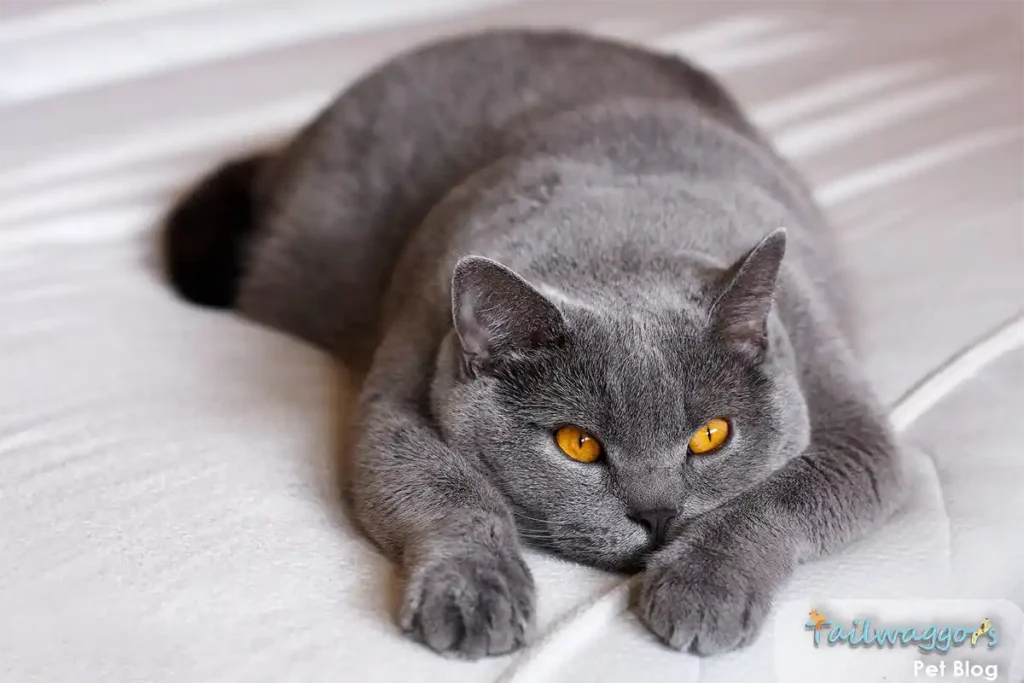
Personality Traits of the British Shorthair
British Shorthairs are often called the “teddy bears” of the feline world, thanks to their gentle nature and plush appearance. These cats are the perfect companions for those seeking a calm, affectionate pet that’s independent enough to handle alone time yet loyal enough to form strong bonds.
Table: Temperament & Behavior Profile
| Behavioral Trait | Characteristic | Training Need | Adaptability Rating |
|---|---|---|---|
| Social Interaction | Moderately social, enjoys companionship | Low | ⭐⭐⭐⭐ |
| Activity Level | Moderate; playful as kittens | Low | ⭐⭐⭐ |
| Problem Solving | Intelligent; quick to learn simple tricks | Moderate | ⭐⭐⭐⭐ |
| Attention Seeking | Subtle; enjoys nearby presence | Low | ⭐⭐⭐⭐ |
| Independence | Balanced; affectionate yet independent | Low | ⭐⭐⭐⭐ |
Affectionate and Loyal Companions
British Shorthairs are known for their calm, affectionate personalities. While not traditional lap cats, they thrive on forming deep bonds with their families. These cats prefer quiet companionship, often staying close by rather than demanding constant attention.
Real-Life Example: British Shorthair owners describe them as “shadow cats,” silently following their humans from room to room and offering quiet company.
“British Shorthairs are ideal for pet parents seeking a balanced companion,” says Dr. Esther Knoetze, BSc, BVSc. “They offer affection without being overly demanding, making them perfect for busy individuals and families alike.”
Highly Intelligent and Trainable
British Shorthairs are highly intelligent, which makes them responsive to training and interactive play. They can learn simple commands like “sit” or “paw” and excel with puzzle toys that challenge their problem-solving skills.
🐱 Training Tip: Positive reinforcement with treats or toys works best. Keep sessions short and engaging to maintain their interest.
Their intelligence can sometimes lead to curiosity-driven explorations, so mild cat-proofing is recommended for safety.
Playful Yet Mellow
British Shorthairs retain a playful streak into adulthood, though their energy levels mellow with age. As kittens, they are active and curious, enjoying feather wands and laser pointers. Adult British Shorthairs prefer shorter play sessions and quiet enrichment activities.
Real-Life Example: A British Shorthair might chase a feather toy enthusiastically for a few minutes before retreating to their favorite cozy spot for a nap.
Their moderate activity levels make them adaptable to various living situations, from apartments to larger homes, as long as they have access to enrichment opportunities.
Social and Gentle with Other Pets
British Shorthairs are sociable and adapt well to multi-pet households. Their calm temperament allows them to coexist peacefully with children, other cats, and even dogs.
Real-Life Example: Many British Shorthair owners describe them as the “peacemakers” of the household, observing interactions before engaging gently.
Their patience and tolerance for gentle handling make them excellent companions for children, often tolerating an occasional clumsy hug or pat with grace.
Low Vocalization and Quiet Companions
British Shorthairs are a quiet breed, preferring to communicate through soft purrs, chirps, and the occasional meow. Their subtle forms of communication make them ideal for owners who value a peaceful environment.
🐱 Fun Fact: British Shorthairs are known to “speak” with their expressive eyes and body language, often using subtle cues to indicate their needs or feelings.
Understanding British Shorthair Personalities
British Shorthair cats are the perfect blend of charm, independence, and quiet affection, earning them a spot as one of the most beloved cat breeds worldwide. Their calm and adaptable nature makes them an ideal fit for families, singles, and even first-time cat owners.
As Dr. Esther Knoetze, BSc, BVSc, explains:
“British Shorthairs are incredibly versatile and low-maintenance, thriving in various environments while forming deep, loyal bonds with their families.”
Whether you’re looking for a feline companion to enrich your quiet home or an affectionate addition to a bustling household, the British Shorthair’s serene disposition and endearing personality will bring warmth and joy to your life.
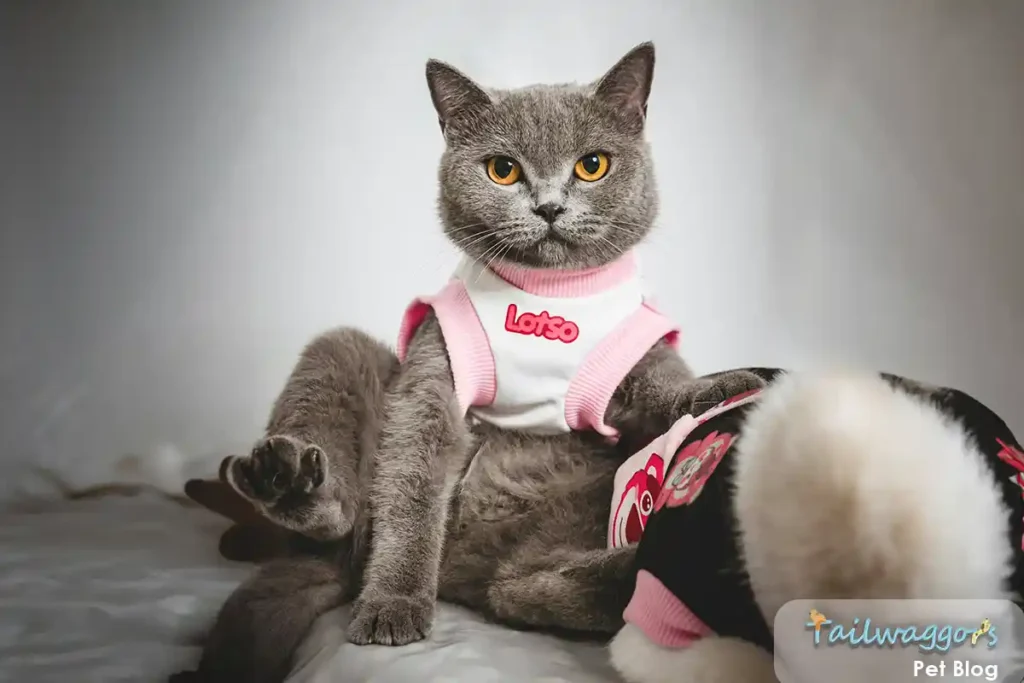
Physical Characteristics of the British Shorthair
Size and Build
The British Shorthair is a medium-to-large breed, celebrated for its sturdy and muscular build. Their robust physique, combined with their rounded features, gives them a distinctive “teddy bear” appearance.
- Average Size:
- Males: 12–18 pounds (5.4–8.2 kg)
- Females: 8–14 pounds (3.6–6.4 kg)
- Notable Features:
- Broad chest and strong, stocky legs.
- Thick, rounded paws and a plush, medium-length tail.
- Distinctive round head and wide-set, expressive eyes.
🐱 Fun Fact: British Shorthairs are among the most physically balanced cat breeds, boasting an athletic yet compact frame that makes them both agile and durable.
Coat and Colors
One of the defining traits of the British Shorthair is its dense, plush coat. This short yet thick fur provides excellent insulation, making it well-suited for colder climates.
Coat Texture
- Plush and Dense: The double-layered coat is soft to the touch and stands slightly away from the body, giving the breed its iconic “cuddly” appearance.
Color Varieties
British Shorthairs come in an impressive array of colors and patterns, making them one of the most diverse breeds in terms of appearance.
- Solid Colors: The iconic “British Blue” (a grayish-blue hue) is the most famous, but other solids include black, white, red, cream, and lilac.
- Bi-color: Classic combinations like black and white or blue and cream.
- Tabby Patterns: Classic, mackerel, and spotted tabbies are common.
- Tortoiseshell (Tortie): A mix of black, red, and cream shades.
- Colorpoint: Features Siamese-like pointed patterns, often seen in blue, lilac, and cream combinations.
Care Needs Based on Coat
While the British Shorthair is a relatively low-maintenance breed, certain coat colors may require extra attention:
- Lighter Colors: Prone to staining around the eyes and mouth. Regular cleaning with a damp cloth can help.
- Tabbies and Bi-colors: Brushing 1–2 times weekly helps maintain the coat’s natural luster and reduces shedding.
- Dense Coats: Due to their plush undercoat, all British Shorthairs benefit from additional grooming during seasonal shedding to prevent matting and hairballs.
🐱 Grooming Tip: Use a grooming mitt or soft-bristle brush to remove loose fur and distribute natural oils, ensuring a healthy, shiny coat.
Facial Features
The British Shorthair’s round face is one of its most distinguishing characteristics.
- Eyes: Large, round, and set wide apart. Eye color varies by coat color, with copper, gold, blue, and green being the most common.
- Ears: Medium-sized, rounded at the tips, and set wide apart to complement the round head.
- Nose: Short and broad, with a gentle curve that enhances their overall sweet expression.
🐱 Fun Fact: The British Shorthair’s wide-eyed gaze and plush cheeks contribute to their reputation as one of the most photogenic cat breeds.
Why Understanding These Characteristics Matters
British Shorthairs’ physical traits, from their plush coats to their round faces and captivating eyes, make them one of the most iconic and beloved cat breeds. With proper care tailored to their dense fur and sturdy build, they can thrive in any loving home. Whether it’s their teddy bear-like charm or their regal presence that draws you in, British Shorthairs are sure to leave a lasting impression on your heart.
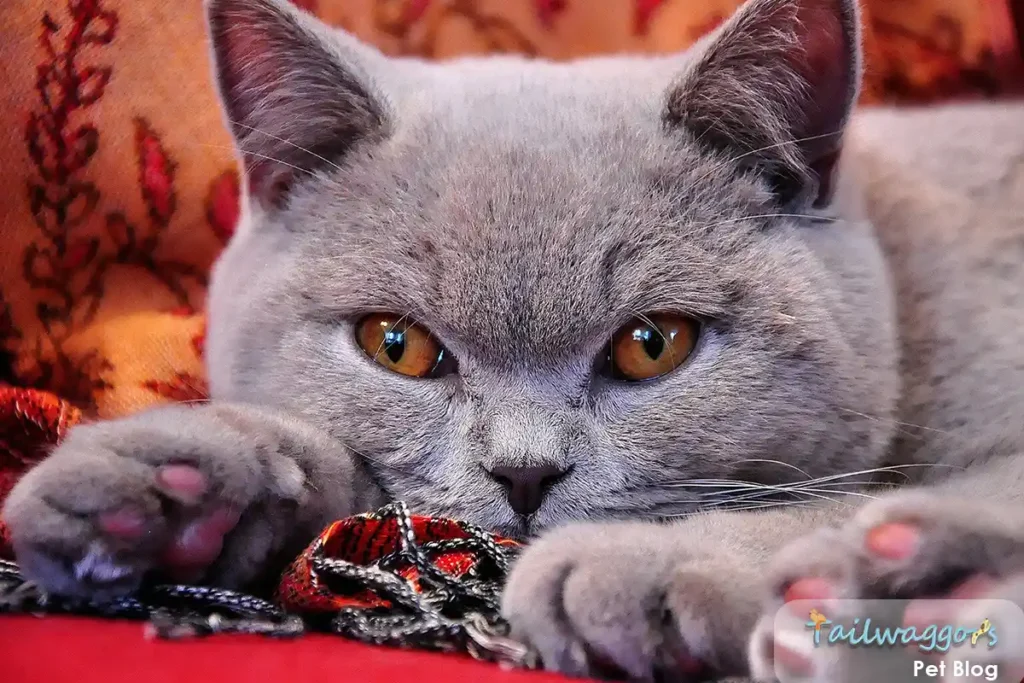
Health and Lifespan of the British Shorthair
The British Shorthair is celebrated for its robust health and impressive lifespan, often living well into its late teens or early twenties with the right care. While generally a hardy breed, British Shorthairs can be predisposed to specific health conditions. Understanding these risks and taking proactive measures will help ensure your feline companion leads a long, happy life.
Average Lifespan of British Shorthairs
British Shorthairs typically live between 12 and 20 years, with many reaching the higher end of this range when provided with a balanced diet, regular exercise, and preventive veterinary care.
Real-Life Example: One British Shorthair owner shared how their 18-year-old cat thrived with daily play sessions and routine health checkups, which allowed early detection and management of minor health concerns.
With proper care and attention, British Shorthairs often live into their late teens or even twenties, making them one of the longest-living cat breeds,” says Dr. Esther Knoetze, BSc, BVSc
Common Health Issues for the British Shorthairs
British Shorthairs are generally healthy but are prone to the following conditions:
Table: Health & Genetic Considerations
| Health Aspect | Risk Level | Prevention Options | Management Rating |
|---|---|---|---|
| Hypertrophic Cardiomyopathy (HCM) | Moderate | Annual cardiac screenings, genetic testing | ⭐⭐⭐⭐ |
| Obesity | High | Portion control, interactive playtime | ⭐⭐⭐⭐ |
| Polycystic Kidney Disease (PKD) | Low | Genetic testing, kidney-friendly diet | ⭐⭐⭐⭐ |
| Dental Disease | Moderate | Weekly brushing, dental chews | ⭐⭐⭐⭐ |
| Joint Issues (Arthritis) | Low to Moderate | Weight management, glucosamine supplements | ⭐⭐⭐⭐ |
Despite their generally strong health, British Shorthair cats are prone to a few breed-specific health conditions. Regular screenings and maintaining a healthy lifestyle can help prevent or manage these conditions.
Hypertrophic Cardiomyopathy (HCM)
- What it is: A genetic heart condition causing thickening of the heart muscle, impairing its ability to pump blood efficiently.
- Symptoms: Early symptoms may include lethargy, labored breathing, and fainting. Severe cases can lead to heart failure.
- Prevention and Management: Genetic testing and annual cardiac screenings starting at age 2 can help detect and manage HCM early. Reducing stress and maintaining a healthy weight also lowers risk.
Obesity
- What it is: British Shorthairs are prone to weight gain due to their stocky build and lower activity levels.
- Symptoms: Increased body fat, reluctance to play, and difficulty jumping.
- Prevention and Management: Regular exercise through interactive play and portion-controlled meals are essential. Puzzle feeders can combine enrichment with weight management.
Polycystic Kidney Disease (PKD)
- What it is: A genetic disorder causing fluid-filled cysts in the kidneys, potentially leading to kidney failure.
- Symptoms: Increased thirst, frequent urination, and weight loss.
- Prevention and Management: Genetic testing helps identify at-risk cats. Regular kidney function monitoring and a kidney-friendly diet can help manage the condition.
Dental Disease
- What it is: Plaque and tartar buildup can lead to gingivitis, periodontal disease, and tooth loss.
- Symptoms: Bad breath, red or swollen gums, and difficulty eating.
- Prevention and Management: Weekly brushing with cat-safe toothpaste, dental chews, and annual professional cleanings.
Joint Issues (Arthritis)
- What it is: Joint inflammation commonly seen in older or overweight cats.
- Symptoms: Limping, stiffness, or reluctance to jump.
- Prevention and Management: Weight control and joint supplements like glucosamine can improve mobility and reduce discomfort.
British Shorthair cats, like all cats, require regular health checkups. If you’re concerned about health risks for your cat, be sure to explore our Complete Cat Emergency Plan Guide for tips on how to handle emergencies.
Proactive Care Checklist for British Shorthairs
| Health Aspect | Recommended Action | Frequency |
|---|---|---|
| Heart Health (HCM) | Annual cardiac screenings | Annually (from age 2) |
| Weight Monitoring | Check body condition score | Monthly |
| Dental Care | Weekly brushing, dental treats | Weekly brushing; annual cleaning |
| Vaccinations | Core vaccines (feline distemper) | As per vet’s schedule |
| Flea and Tick Prevention | Apply topical or oral preventatives | Monthly |
Signs of Illness to Watch For
Early detection is crucial for managing health issues effectively. Contact your veterinarian if you observe:
- Persistent coughing or labored breathing (possible HCM).
- Increased thirst or urination (potential PKD or diabetes).
- Bad breath, red gums, or difficulty eating (dental disease).
- Unexplained weight gain or loss.
- Limping or reluctance to jump (possible arthritis).
Early diagnosis is key. Schedule regular checkups and don’t hesitate to contact your vet if you notice unusual behavior or symptoms” implores Dr. Esther Knoetze, BSc, BVSc.
Ensuring a Healthy Life for Your British Shorthair
By staying proactive with health screenings, providing a nutritious diet, and engaging your British Shorthair in daily activities, you can help them lead a long, fulfilling life. With their calm and affectionate nature, British Shorthairs will reward your care with years of companionship and love.
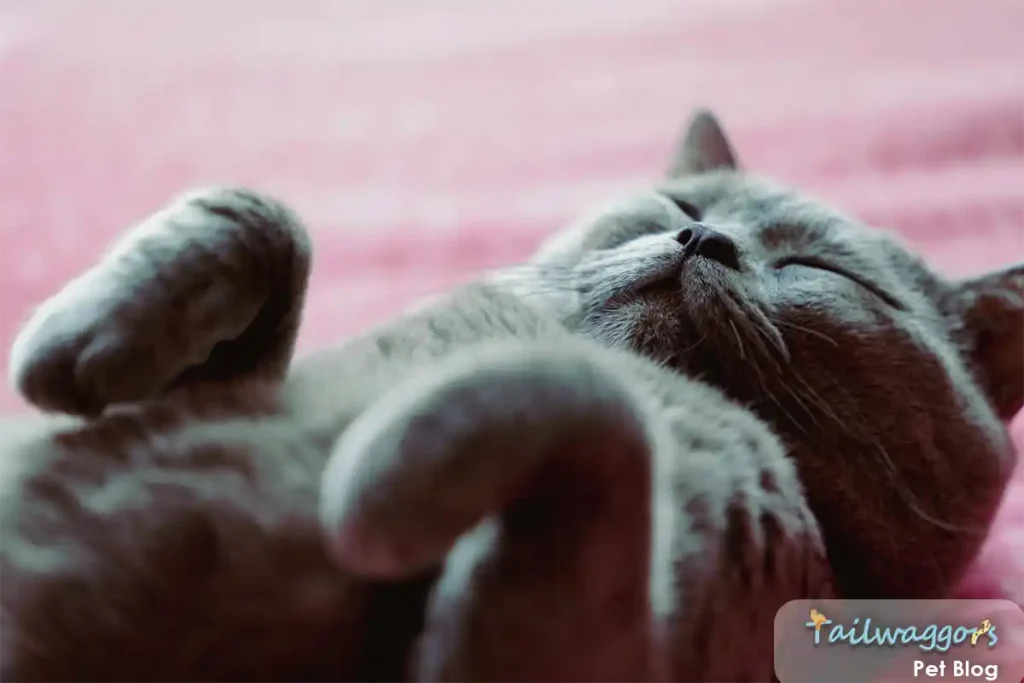
Caring for a British Shorthair: Grooming, Diet, and Maintenance Guide
Table: Care Requirements for British Shorthairs
| Care Aspect | Requirement Level | Frequency | Detail | Importance Rating |
|---|---|---|---|---|
| Grooming | Moderate | Weekly | Soft-bristle brush, nail trimming | ⭐⭐⭐⭐ |
| Feeding | High | Daily | High-protein diet, portion control | ⭐⭐⭐⭐⭐ |
| Exercise | Moderate | Twice daily | Interactive toys, puzzle feeders | ⭐⭐⭐⭐ |
| Environment | High | Continuous | Cozy beds, quiet retreats | ⭐⭐⭐⭐⭐ |
Grooming: Maintaining Their Plush Coat
The British Shorthair’s dense coat is iconic yet surprisingly easy to maintain. Regular grooming reduces shedding, prevents hairballs, and ensures their coat stays plush and healthy.
- Brushing: Use a soft-bristle brush or grooming mitt weekly. Increase to 2–3 times per week during seasonal shedding (spring and fall) to manage loose fur.
- Ear Cleaning: Check ears monthly for wax buildup. Use a veterinarian-approved cleaner for gentle maintenance.
- Dental Hygiene: Brush weekly with cat-safe toothpaste to prevent plaque buildup and gum disease.
🐾 Tailwaggors Tip:
Start grooming routines early to build trust and make the process stress-free for your British Shorthair.
Diet and Nutrition: Feeding for Health and Longevity
British Shorthairs are prone to weight gain due to their stocky build, so portion control and high-quality nutrition are key to their long-term health.
- High-Protein Diet: Choose foods rich in animal-based proteins to support their muscular frame.
- Portion Control: Carefully measure meals. Consult your vet for portion sizes tailored to your cat’s age and activity level.
- Wet vs. Dry Food: A 50/50 balance ensures hydration while maintaining dental health.
- Hydration: Encourage water intake with a cat fountain to prevent dehydration.
Balanced diets tailored to your cat’s weight and activity level significantly reduce the risk of obesity,” says Dr. Esther Knoetze, BSc, BVSc.
Exercise and Enrichment: Keeping Them Engaged
While not as active as some breeds, British Shorthairs benefit from daily play and mental stimulation to prevent obesity and boredom.
- Interactive Play: Engage in 10–15 minutes of play twice daily with feather wands or laser pointers.
- Puzzle Feeders: Combine mental enrichment with portion control by using treat-dispensing toys.
- Climbing and Scratching: Provide scratching posts and window perches to satisfy their natural instincts.
Creating a Comfortable Environment
British Shorthairs thrive in calm, predictable settings. Here’s how to create a space that meets their needs:
- Cozy Beds and Blankets: Position soft bedding in quiet, low-traffic areas.
- Safe Retreats: Offer a private space for times of stress, such as during loud events or when introducing new pets.
- Temperature Regulation: Ensure access to cool areas during summer to prevent overheating.
🐾 Tailwaggors Tip:
Check out our Vet-Approved New Cat Supply Checklis for expert recommendations on bedding, toys, and more.
Why Proper Care Matters
British Shorthair cats are renowned for their calm demeanor, affectionate nature, and plush, dense coats. Providing proper care, including balanced nutrition, regular grooming, and mental stimulation, is essential to ensure they thrive in a happy and healthy environment. These sturdy companions flourish when their physical and emotional needs are met, rewarding their owners with loyalty and quiet charm.
🐾 Tailwaggors Tip:
Make time to brush your British Shorthair weekly to maintain their dense coat and reduce shedding. Pair grooming sessions with interactive play, such as using laser pointers or feather toys, to keep their minds sharp and bodies active. By investing in their well-being, you’ll nurture a strong bond and enjoy their regal, yet playful, companionship for years to come.
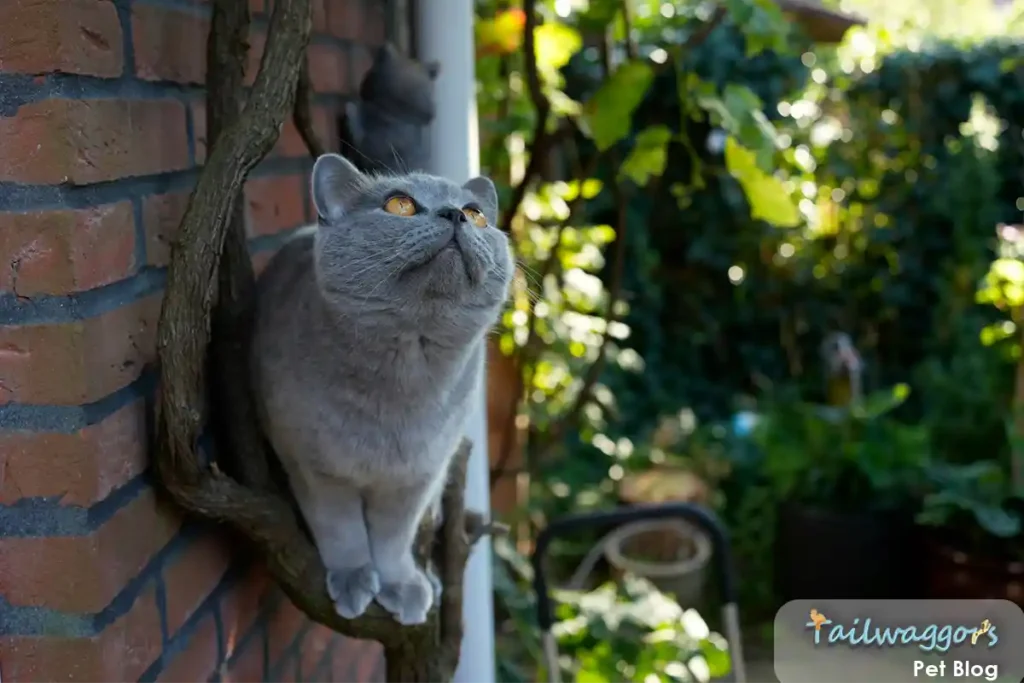
Owning a British Shorthair Cat: Budgeting and Financial Insights
Bringing a British Shorthair cat into your home is an exciting and rewarding experience. However, understanding the financial responsibilities associated with this breed is essential for providing the best care. This guide breaks down initial expenses, ongoing costs, and budgeting tips to ensure your British Shorthair thrives.
Table: Cost Breakdown Analysis for British Shorthairs
| Expense Category | Initial Cost (USD) | Annual Cost (USD) | Value Rating |
|---|---|---|---|
| Adoption or Breeder Fees | $50–$3,500 | N/A | ⭐⭐⭐⭐ |
| Food and Treats | N/A | $360–$720 | ⭐⭐⭐⭐⭐ |
| Litter and Maintenance | $30–$100 | $120–$240 | ⭐⭐⭐⭐ |
| Veterinary Care | $150–$500 | $200–$600 | ⭐⭐⭐⭐⭐ |
| Grooming Supplies | $20–$100 | $50–$100 | ⭐⭐⭐⭐ |
| Pet Insurance | N/A | $336–$600 | ⭐⭐⭐⭐ |
| Toys and Enrichment | $50–$150 | $50–$150 | ⭐⭐⭐ |
| Emergency Care | $200–$5,000 (varies) | N/A | ⭐⭐⭐⭐ |
Initial Costs: Preparing for Your British Shorthair
Adoption vs. Breeder Fees
- Adoption Fees: $50–$400
Adopting from a shelter often includes basic health procedures like vaccinations, spaying/neutering, and microchipping. This is a cost-effective option for those less concerned about pedigree. - Breeder Fees: $1,500–$3,500
Purchasing from a reputable breeder ensures health guarantees and lineage transparency. Rare coat colors like lilac or chocolate may command higher prices, up to $3,500.
Essential Supplies for Day One
Ensure your home is ready with the following essentials:
| Item | Cost Range (USD) |
|---|---|
| Litter Box | $30–$100 |
| Cat Litter (per bag) | $15–$25 |
| Food and Water Bowls | $15–$30 |
| Scratching Posts | $20–$100 |
| Cat Bed | $20–$150 |
| Toys | $15–$50 |
| Grooming Tools | $20–$50 |
| Total Setup Cost | $150–$500 |
Ongoing Annual Costs
Food and Treats
British Shorthairs thrive on a balanced diet to maintain their muscular build and energy levels.
| Food Type | Cost Range (Annually) |
|---|---|
| Dry Food | $240–$480 |
| Wet Food (Optional) | $300–$600 |
| Specialty Diets | $400–$800 |
🐾 Tailwaggors Tip:
Consult your veterinarian to determine the best diet based on your cat’s age and health. A mix of wet and dry food can support hydration and dental health.
Veterinary Care
Routine vet visits are crucial to monitor your British Shorthair’s health and address potential breed-specific issues like HCM or obesity.
| Category | Cost Range (Annually) |
|---|---|
| Wellness Exams | $100–$200 |
| Vaccinations | $50–$100 |
| Flea, Tick, and Worm Prevention | $60–$150 |
| Dental Cleanings | $200–$400 (every 1–2 years) |
Preventive care is essential for detecting and managing conditions like HCM early,” says Dr. Esther Knoetze, BSc, BVSc.
Grooming Expenses
British Shorthairs’ plush coats require moderate grooming.
| Type | Cost Range |
|---|---|
| At-Home Grooming Supplies | $50–$100 annually |
| Professional Grooming | $50–$100 per session |
Hidden and Emergency Costs
Unexpected expenses can arise, so planning is key.
- Emergency Vet Visits: $200–$5,000 for diagnostics or surgeries.
- Prescription Diets: $400–$1,000 annually for kidney or weight management.
- Pet Boarding or Sitting: $25–$50 per day during travel.
🐾 Tailwaggors Tip:
Consider pet insurance with coverage for hereditary conditions like HCM or PKD to offset emergency costs.
Cost-Saving Strategies for Owners
- Invest in Durable Supplies: High-quality scratching posts and beds last longer, reducing replacement costs.
- Preventive Healthcare: Regular checkups help detect issues early, saving on emergency treatments.
- Buy in Bulk: Stock up on litter, food, and toys during sales to cut down recurring expenses.
- DIY Grooming: Learning basic grooming techniques can save hundreds on professional services.
Real-Life Example: One British Shorthair owner shared that switching to bulk food purchases saved them over $200 annually, which was then invested in enrichment toys and preventive care.
Is Owning a British Shorthair Worth the Investment?
Owning a British Shorthair is a financial commitment, but the joy and companionship they bring make it worthwhile. By budgeting for both the expected and unexpected costs, you can ensure your furry friend lives a happy, healthy life.
For more tips on managing pet care expenses and essential ownership guides, explore our:
Disclaimer:
The cost estimates provided in the “British Shorthair: Budgeting and Financial Insights” section are general approximations based on current market trends and commonly reported expenses in the United States. Actual costs may vary depending on factors such as location, individual pet needs, specific health conditions, and lifestyle choices.
These estimates are intended for informational purposes only and should not replace personal research or consultations with veterinary or pet care professionals. We recommend setting aside additional funds for unexpected expenses, including emergency veterinary care and specialized dietary or training needs, to ensure your Alaskan Malamute receives the best possible care.
Always consult with a veterinarian or trusted breeder for detailed guidance tailored to your specific situation. Tailwaggors is not responsible for discrepancies or unforeseen costs that may arise.
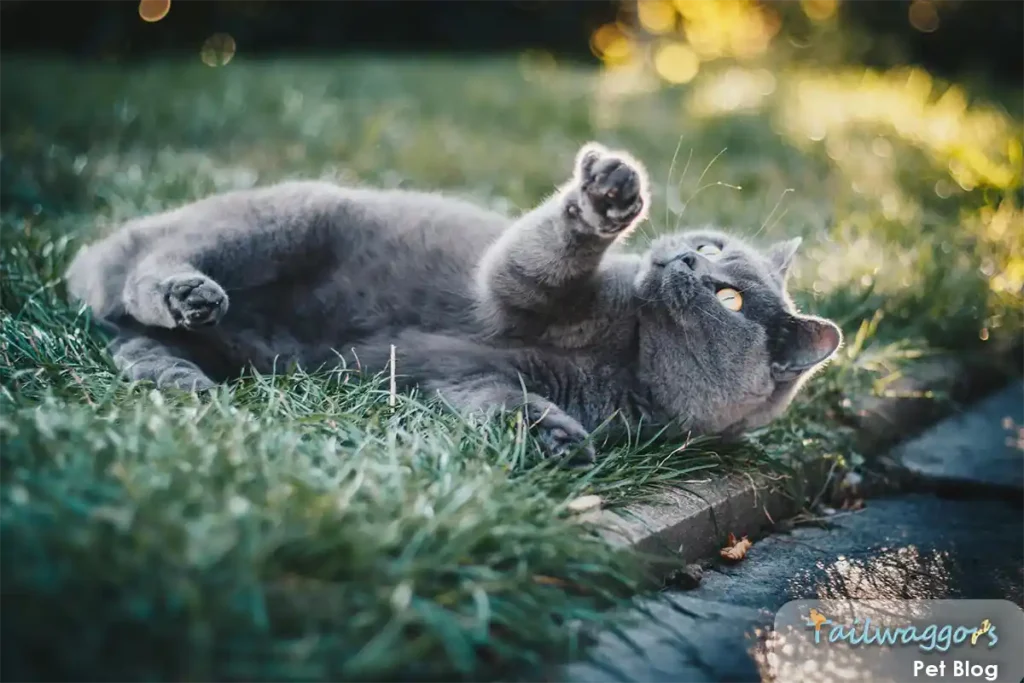
Breed Comparison: The British Shorthair vs. Other Popular Breeds
When considering a new feline companion, comparing the British Shorthair to other popular breeds can help you find the perfect match for your lifestyle. Known for their calm demeanor and low-maintenance grooming needs, British Shorthairs offer a balanced mix of affection and independence, making them ideal for families and individuals alike.
Table: Breed Comparison
| Aspect | British Shorthair | Ragdoll | Persian | Maine Coon | Rating |
|---|---|---|---|---|---|
| Size | Medium to large (8–18 lbs) | Medium to large (10–20 lbs) | Medium (7–12 lbs) | Large (13–18 lbs) | ⭐⭐⭐⭐⭐ |
| Coat | Plush, dense, low-maintenance | Silky, moderate care | Long, high-maintenance | Shaggy, moderate care | ⭐⭐⭐⭐⭐ |
| Personality | Calm, independent, affectionate | Docile, lap-loving | Quiet, loyal, serene | Sociable, playful, friendly | ⭐⭐⭐⭐⭐ |
| Grooming Needs | Low | Moderate | Very high | Moderate | ⭐⭐⭐⭐ |
| Activity Level | Moderate | Low | Low | High | ⭐⭐⭐⭐ |
| Compatibility with Pets | Excellent | Excellent | Moderate | Excellent | ⭐⭐⭐⭐⭐ |
British Shorthair vs. Ragdoll
The Ragdoll’s affectionate and lap-loving nature often makes it a favorite among families, but the British Shorthair offers a more independent yet equally loyal alternative.
Key Differences:
- Size: While both breeds are medium to large, British Shorthairs have a stockier, muscular build compared to the elongated frame of the Ragdoll.
- Coat: Ragdolls require moderate grooming (1–2 times per week), while British Shorthairs are low-maintenance, needing only weekly brushing.
- Temperament: Ragdolls are quintessential lap cats, known for their relaxed demeanor when picked up. In contrast, British Shorthairs prefer sitting nearby, offering quiet companionship.
- Activity Level: British Shorthairs enjoy short play sessions, whereas Ragdolls tend to lounge and snuggle more.
🐾 Tailwaggors Tip:
If you want a cat that’s affectionate but values independence, the British Shorthair is an excellent choice.
British Shorthair vs. Persian
While both breeds are calm and affectionate, Persians demand significantly more grooming and care compared to the easy-going British Shorthair.
Key Differences:
- Size: British Shorthairs are larger and more muscular, ranging from 8–18 lbs compared to the Persian’s 7–12 lbs.
- Coat: Persians require daily grooming to maintain their long, luxurious coat, whereas British Shorthairs’ dense coats only need weekly brushing.
- Health: Persians are more prone to hereditary conditions, such as Polycystic Kidney Disease (PKD) and respiratory issues due to their flat faces, making them higher maintenance in terms of health.
For first-time cat owners or those seeking a low-maintenance breed, the British Shorthair is a better option than the Persian,” advises Dr. Esther Knoetze, BSc, BVSc.
British Shorthair vs. Maine Coon
The Maine Coon, often called the “dog of the cat world,” is an outgoing and playful breed. British Shorthairs, on the other hand, are more laid-back and independent, making them ideal for a quieter household.
Key Differences:
- Size: Maine Coons are one of the largest cat breeds, with males often exceeding 18 lbs. British Shorthairs are smaller but sturdily built.
- Coat: Maine Coons have a shaggy, water-resistant coat that requires moderate grooming, compared to the British Shorthair’s easy-to-maintain plush fur.
- Temperament: Maine Coons are highly active and thrive on exploration, while British Shorthairs are relaxed, preferring occasional play followed by lounging.
Real-Life Example: A British Shorthair owner described their cat as the “perfect blend of independence and affection,” happy to observe family activities from a cozy spot.
Choosing the Right Breed for Your Home
- British Shorthair: Best for those seeking a low-maintenance, affectionate, and independent companion.
- Ragdoll: Perfect for families looking for a snuggly lap cat.
- Persian: Ideal for owners willing to commit to daily grooming and care.
- Maine Coon: Great for active households that want a playful, dog-like cat.
For a deeper dive into the unique traits of British Shorthairs and other popular breeds, check out our How Many Cat Breeds Are There? Complete Guide.
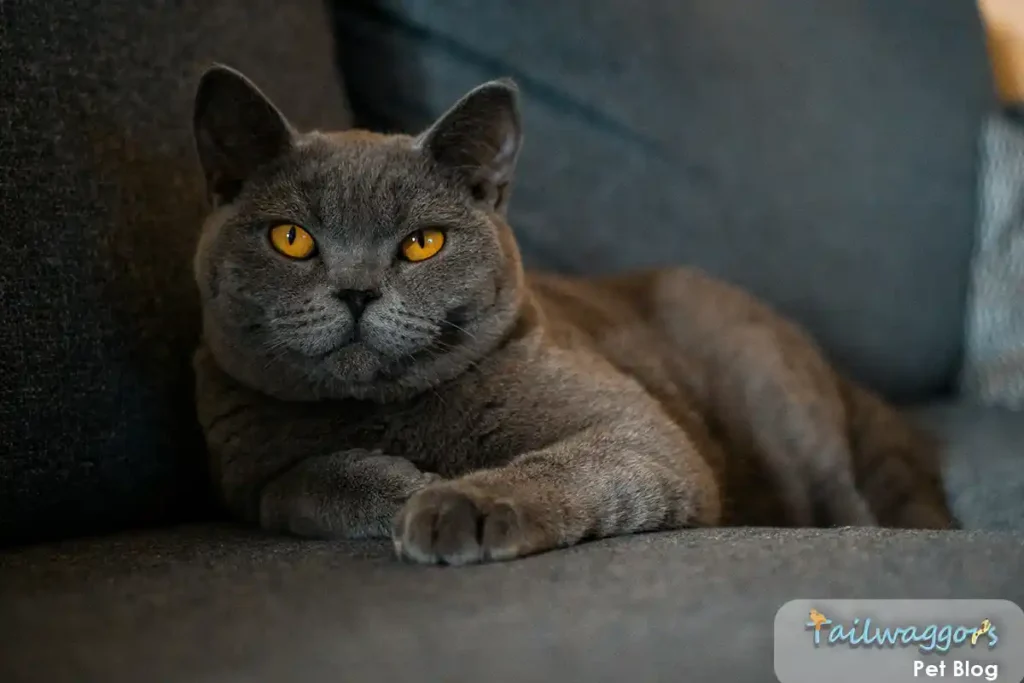
Frequently Asked Questions about the British Shorthair Cat
British Shorthairs are cherished for their calm demeanor, plush coats, and balanced personalities. Whether you’re a first-time cat owner or an experienced pet parent, this FAQ section answers the most pressing questions about this lovable breed, from health and grooming to personality traits.
Are British Shorthairs Hypoallergenic?
+No, British Shorthairs are not hypoallergenic. While their dense coat may produce fewer fur-related allergens than long-haired breeds, they still shed dander, a primary allergen.
🐾 Pro Tip:
Regular brushing and vacuuming can help minimize allergens, making them manageable for some allergy sufferers.
How Much Do British Shorthairs Weigh?
+British Shorthairs are medium to large cats:
- Males: 12–18 pounds (5.4–8.2 kg)
- Females: 8–14 pounds (3.6–6.4 kg)
💡 Fun Fact:
Despite their stocky build, British Shorthairs are agile and quick when they want to be!
How Long Do British Shorthairs Live?
+With proper care, British Shorthairs have an impressive lifespan of 12–20 years. Their longevity depends on a balanced diet, exercise, and routine veterinary checkups.
🐾 Pro Tip:
Regular health screenings, particularly for conditions like HCM, can help extend your cat’s lifespan.
Are British Shorthairs Good with Kids and Pets?
+Yes! Their calm demeanor makes British Shorthairs excellent companions for children and other pets. They’re patient and tolerant, making them a great addition to family households.
📝 Real-Life Example:
Many owners report their British Shorthair calmly observing household activities, happily interacting with kids or dogs without becoming overwhelmed.
Do British Shorthairs Like Water?
+Unlike some breeds, British Shorthairs are not typically drawn to water. However, individual cats may enjoy playing with running water from faucets or fountains.
🐾 Pro Tip:
Provide a cat water fountain for hydration and enrichment if your British Shorthair shows interest.
How Do You Train a British Shorthair?
+British Shorthairs are intelligent and respond well to positive reinforcement. While they may not be as eager to please as dogs, they can learn commands like “sit” or “come” with treats, toys, and patience.
🐾 Training Tip:
Keep sessions short and fun. Interactive toys like feather wands can double as training tools and enrichment.
What Are the Grooming Needs of a British Shorthair?
+British Shorthairs have a plush coat that requires weekly brushing to remove loose fur. During shedding seasons, brushing 2–3 times per week is recommended.
🐾 Grooming Tip:
Start grooming early to make the process stress-free for both you and your cat.
Are British Shorthairs Prone to Specific Health Issues?
+Yes, common health concerns include:
- Hypertrophic Cardiomyopathy (HCM): Genetic heart condition; regular screenings are recommended.
- Obesity: Portion control and daily exercise are crucial.
- Dental Disease: Weekly brushing and routine dental checkups prevent issues.
🩺 Expert Insight:
“Annual cardiac screenings starting at age 2 for British Shorthairs to detect HCM early.” – Dr. Esther Knoetze, BSc, BVSc
How Much Exercise Does a British Shorthair Need?
+British Shorthairs enjoy 10–15 minutes of interactive play sessions twice a day. While they’re not as active as some breeds, they benefit from toys that mimic prey movements, like feather wands and laser pointers.
Can British Shorthairs Live in Apartments?
+Absolutely! British Shorthairs adapt well to small spaces, provided they have cozy spots to lounge and enrichment items like scratching posts and toys.
🐾 Pro Tip:
Place a perch near a window for your British Shorthair to observe the outdoors—an activity they often find entertaining.
British Shorthairs: The Quintessential Gentle Companion
The British Shorthair is celebrated for its plush, teddy bear-like appearance, calm demeanor, and unwavering loyalty. By understanding their easygoing nature and providing proper care, owners can cultivate a deeply rewarding relationship with this regal breed. With balanced nutrition, gentle enrichment, and routine veterinary checkups, British Shorthairs bring steady companionship, charm, and warmth to any home.
For expert guidance on ensuring your British Shorthair thrives, explore these must-read resources:
Conclusion: Wrapping Up the Ultimate Guide to the British Shorthair
The British Shorthair is a delightful blend of elegance and ease, making it one of the most beloved cat breeds worldwide. With its calm demeanor, affectionate nature, and low-maintenance care needs, this breed is perfect for a wide range of households, from busy families to single owners seeking a loyal companion.
Their independent yet loving personality ensures they form meaningful bonds without demanding constant attention. Whether they’re lounging on a cozy bed, “supervising” from a sunny perch, or enjoying a short play session, British Shorthairs bring warmth and companionship to every corner of the home.
By understanding their grooming needs, health considerations, and dietary preferences, you can provide your British Shorthair with a happy and healthy life. Regular vet visits, engaging enrichment, and a balanced diet are all key to ensuring their longevity and well-being.
Thinking About Adopting a British Shorthair?
If you’re considering adding a British Shorthair to your family, remember that this breed is a long-term commitment with costs and care needs to match. From initial expenses to ongoing enrichment and health maintenance, planning ahead ensures a seamless experience for both you and your new feline friend.
Want to learn more about preparing for your cat? Check out these resources:

Share Your British Shorthair Story!
Already a proud British Shorthair parent? We’d love to hear about your experiences! Share your stories, tips, and photos in the comments below or tag us on social media. Don’t forget to follow us for more updates, expert advice, and adorable cat content. Contact Tailwaggors.
Meet the British Shorthair—the regal companion with a heart full of charm! 🐾💫
Discover their calm personality, health insights, grooming tips, cost breakdown, and more in this ultimate guide. Share with fellow cat enthusiasts and celebrate the elegance of these iconic felines!🐱❤️


